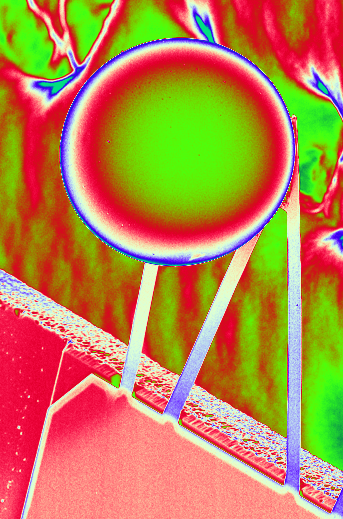Dark matter lab growing
 The Southern Hemisphere’s first underground dark matter physics laboratory should be ready by the end of the year.
The Southern Hemisphere’s first underground dark matter physics laboratory should be ready by the end of the year.
The Stawell Underground Physics Laboratory (SUPL), located one kilometre underground, is designed to detect the universe’s elusive dark matter.
Dr Leonie Walsh, Victoria’s first lead scientist, is interim chair of the company that will operate and manage the SUPL.
She has returned from a visit to the site, where she saw the work underway.
“We saw the cavern walls where the lab is being built, being sprayed with a product called Tekflex to reduce the potential for interference from background radon gas in the rock mass, in experiments,” Dr Walsh said.
“As an industrial scientist, I have worked across a broad range of industrial sites around the world, but none as unique as SUPL.”
It takes half an hour to journey underground to the site of the lab. Dr Walsh completed the journey after undergoing the strict safety induction and personal protective equipment (PPE) fit-out.
“Researchers will start their day with a 10km drive down a maze of tunnels in protective equipment to the cavernous laboratory, 1,100 meters underground to work on their dark matter experiments with equipment designed and built for the purpose of finding dark matter – this thing that makes up 85 per cent of our universe, but which continues to be a mystery,” she said.
“The disused section of Stawell’s gold mine in regional Victoria, has turned out to be the ideal location to progress our understanding of dark matter.”
The 33 metres long, 10 metres wide lab is funded by a $10 million grant from the Federal and State Governments, supported by a $35 million Australian Research Council for the Centre of Excellence for Dark Matter Particle Physics based at the University of Melbourne.
Tom Kelly, the University of Melbourne’s Senior Project Manager, said that major pieces of the plant as well as plumbing, electrical and communications cable and mechanical ductwork and piping are expected to be in place by early October.
“We anticipate the handover to be on time and to commence the installation of experimental equipment before Christmas,” Mr Kelly said.
The five research institutions that will work at Stawell are Melbourne University, Swinburne University of Technology, Adelaide University, the Australian National University and the Australian Nuclear Science and Technology Organisation (ANSTO).








 Print
Print